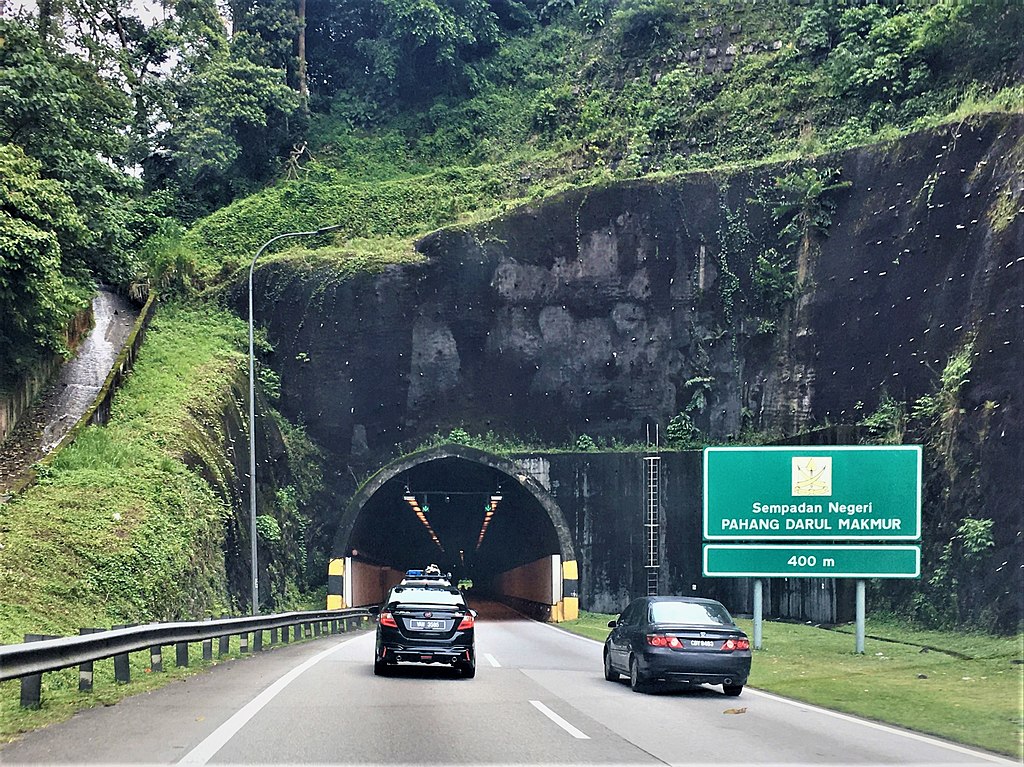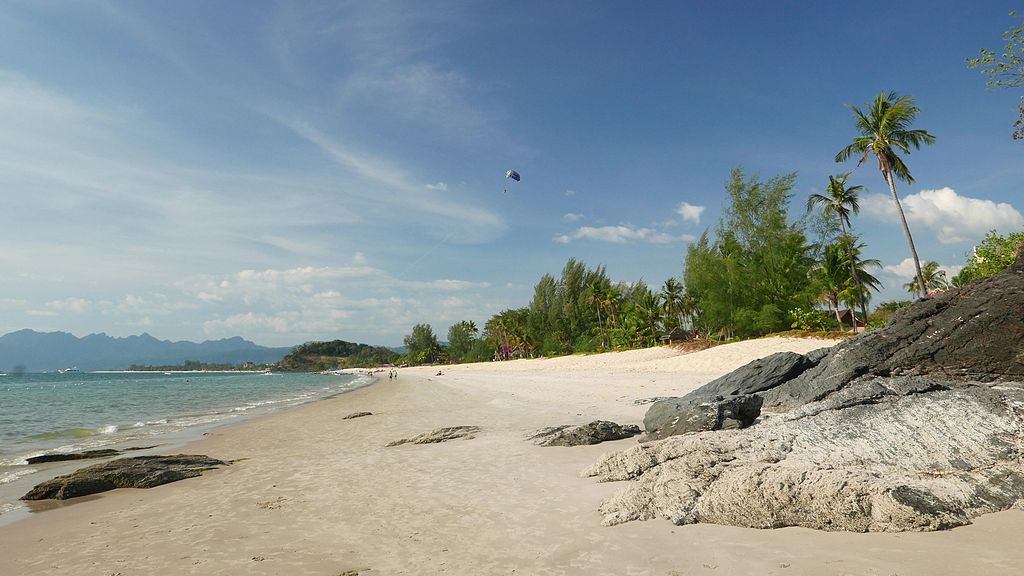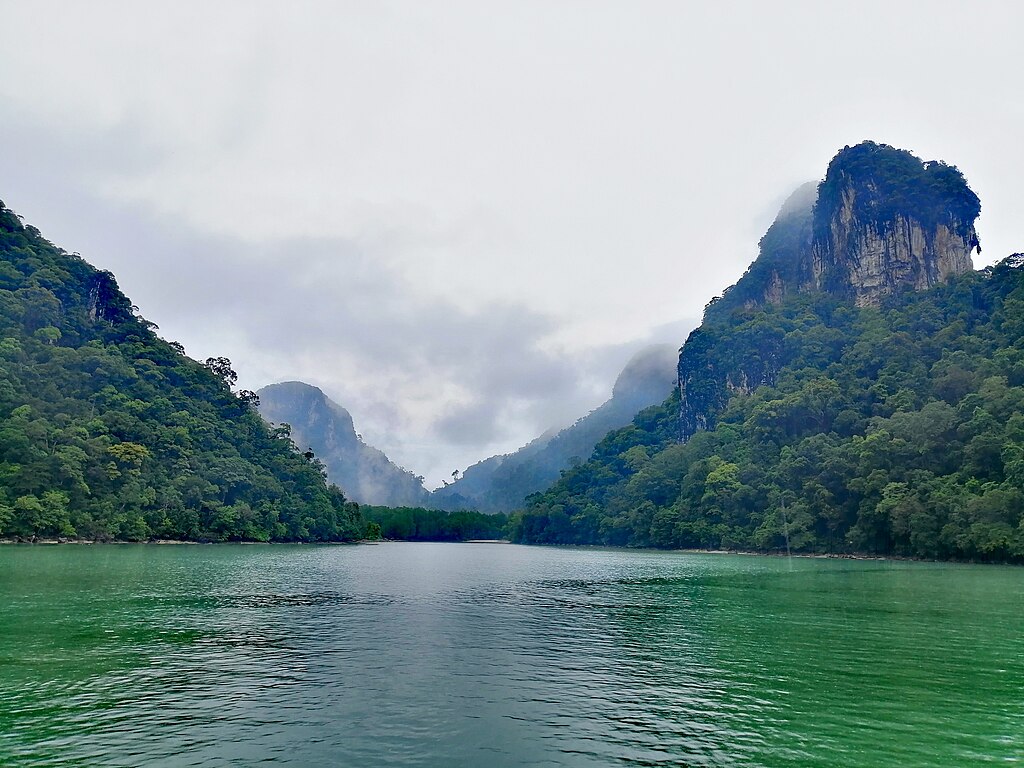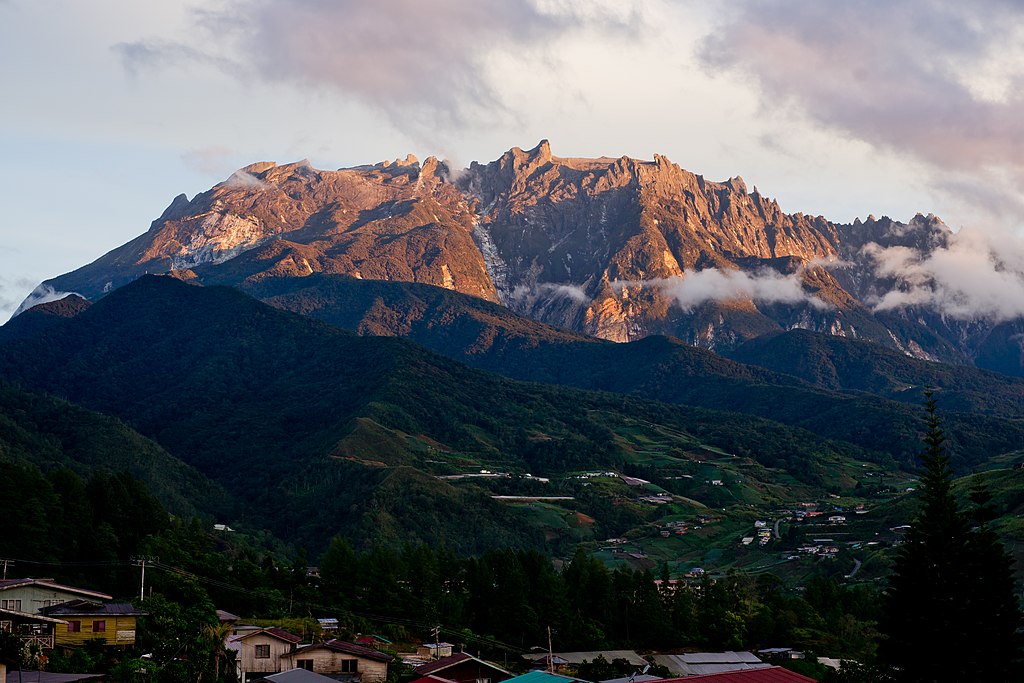Malaysia's Spooky Places and Mystical Legends You Need to Visit
Malaysia doesn’t only offer beaches, rainforests, and food adventures. It also has a deep fascination with the supernatural. Horror has long been one of the most popular film genres here in Malaysia (and Indonesia and Thailand). From classic folklores to modern ghost thrillers, we have always loved a good scare. That’s partly because mysticism has been woven into everyday life for centuries.
Although some of these beliefs are slowly fading away in the face of modern life, they still hold a place in the culture, especially among communities that continue to mix folklore, spirituality, and daily living. Even for those who don’t take ghost stories too seriously, the thrill of a haunting tale or a legendary curse is still something they enjoy for fun.
This Halloween, if you’re curious to see a different side of Malaysia, here’s a guide to some of the country’s most haunted and mystical places.
Table of Contents
ToggleHaunted & abandoned
Kellie's Castle, Perak
Kellie’s Castle is one of Malaysia’s most iconic haunted landmarks, standing in Batu Gajah, Perak. It was built in the early 20th century by a Scottish planter, William Kellie Smith, who wanted a grand home to impress his peers and provide comfort for his family.
Unfortunately, Smith died suddenly of pneumonia in 1926 while in Portugal, and the castle was never completed. Left abandoned, the half-finished halls and hidden passageways became fertile ground for ghost stories.
Today, it’s open to the public as a heritage attraction. Visitors and paranormal enthusiasts claim to hear unexplained footsteps echoing through the upper floors, see shadowy figures near the corridors, and even catch glimpses of Smith himself wandering the balcony. One popular tale says a ghostly figure of a little girl (believed to be his daughter) can sometimes be seen in one of the upstairs windows.
Karak Highway, Pahang
The Karak Highway, the main road linking Kuala Lumpur to the east coast, is infamous not just for its dangerous bends and accident history, but also for the ghost stories that cling to it. The most famous one is of the driverless yellow Volkswagen that appears suddenly, overtakes drivers, and then disappears without a trace. Some drivers claim that no matter how fast they go, they can never seem to pass the phantom car.
Because of its reputation, many Malaysians avoid traveling the Karak Highway after dark, preferring to wait until daylight to make the journey. Whether or not you believe in spirits, the combination of foggy mountain air, dim lighting, and the road’s accident-scarred history is enough to make any late-night drive feel unnerving.
Villa Nabila, Johor
Overlooking the Straits of Johor, Villa Nabila is perhaps Malaysia’s most infamous haunted house. The derelict mansion sits in Danga Bay, hidden behind overgrowth and walls streaked with decay.
There are countless versions of how the wealthy family who once lived in the mansion met their end. Some say it was the maid who turned on them, while others whisper of a robber, a jealous relative, a vengeful stepmother, or even the father himself. Since then, the villa has been believed to be cursed, with their spirits unable to leave.
In 2013, the story hit national headlines when a teenager was reported missing after entering the villa with friends, reigniting its reputation as dangerously haunted (though the boy was later found, the case cemented the villa’s eerie status). In 2015, a horror movie was made about the mansion.
While many of the stories can’t be proven, the crumbling architecture is enough to stir the imagination. Villa Nabila isn’t officially open to tourists like Kellie’s Castle, but it remains one of Malaysia’s most talked-about haunted sites.
Amber Court, Genting Highlands
Perched high in the misty mountains of Genting Highlands, Amber Court was once intended to be a luxury apartment complex for holidaymakers seeking cool air and a mountain retreat.
Unfortunately these days, although some units are still occupied or rented out as homestays, the building looks very different from what it was meant to be. The paint is peeling, weeds and blood-red algae creep around the building, and whole sections feel empty and forgotten. Sitting up in the misty mountains, it’s almost always wrapped in fog, which makes the place look like it belongs in a horror movie.
Over time, it’s become known as one of Malaysia’s most haunted spots. People who’ve stayed there talk about doors slamming on their own, footsteps echoing in empty corridors, lights flickering for no reason, and other eerie stuff that makes ghost hunters love the place. Even if you don’t believe in that sort of thing, a walk through Amber Court’s silent, echoing hallways at night is enough to make your skin crawl.
Bukit Tunku (Kenny Hills), Kuala Lumpur
Bukit Tunku looks harmless enough in the daytime. It’s an upscale neighborhood filled with colonial mansions, embassies, and leafy roads. But at night, the whole place changes. The streets get so quiet it feels like you’re the only person around, and that’s when the ghost stories start to make sense. Taxi drivers will tell you about phantom motorcyclists who appear in their rearview mirrors before vanishing, or mysterious white figures drifting between the trees.
Part of the creepiness also comes from the roads that twist into pitch-black corners and abandoned houses with broken windows hidden behind overgrown gates. Even if you’re not superstitious, a late-night drive through Bukit Tunku has a way of raising the hairs on the back of your neck.
Penang War Museum, Penang
Located on Bukit Batu Maung in southern Penang, the Penang War Museum is a sprawling fortress complex originally built by the British in the 1930s. During the Japanese occupation in World War II, it was used as a base and reportedly as a site for interrogations and executions. Today, the tunnels, barracks, and gun emplacements serve as a museum, but the shadows of its violent past continue to haunt the atmosphere.
People who visit say they feel sudden chills or hear footsteps when no one else is around. Some claim to have seen ghostly figures still patrolling the grounds, or heard strange metallic clanging echoing through empty corridors. The place already has a heavy atmosphere in the daytime, but if you come for one of the night tours, the silence and darkness make it even more unnerving.
Highland Towers, Selangor
Highland Towers is the site of one of Malaysia’s worst residential tragedies. On 11 December 1993, after weeks of heavy rain, Block 1 (one of three 12-storey apartment blocks) collapsed due to a landslide caused by ground saturation and failure in drainage/diversion systems. 48 people died.
The collapse left the other two blocks standing but forever tainted. Locals tell stories of strange echoes, unexpected cold drafts, phantom cries. Paranormal investigators occasionally visit hoping for proof. Whether real or imagined, the site carries a heavy emotional weight for local residents.
Mimaland, Selangor
Mimaland was Malaysia’s first big theme park, built on about 300 acres in Ulu Gombak, Selangor. It opened in 1975 and for years was a hub of fun, with large waterslides, a swimming pool, a man-made lake for boating/fishing, chalets and motels, dinosaur replicas, jungle trails, and more.
But then tragedies started to pile up. There were drownings, severe accidents, and safety concerns. Finally, in May 1994, a landslide devastated the place, causing it to be ordered shut permanently.
Nowadays, nature has taken over the deserted theme park. It’s off official tourist lists but it draws urban explorers, photographers, ghost story lovers.
99-Door Mansion (Byram Estate / Caledonia House), Penang
Hidden deep in an oil palm estate in Nibong Tebal lies what locals call the 99-Door Mansion, also known as Caledonia House. It was built by the Ramsden family, British plantation owners, in the 1800s. The name comes from its weird layout: around ten rooms each with five to six doors, plus a balcony, dance hall, kitchen etc, adding up (or so people say) to 99 doors in total.
The dark stories start with the mansion’s falling into neglect. One of the Ramsden heirs, John St Maur Ramsden, was murdered in 1948 (shot twice in the head on the grand staircase). The killer was never caught.
Over the years, people say the house has been home to more than just memories: rumors of a bomoh (witch-doctor) using the mansion for rituals, of strange noises, a creepy aura, and claims that a “100th door” appears at midnight.
Mona Fandey's house, Selangor
Mona Fandey was once a local pop singer, later a shaman / spiritual healer, who became infamous after being convicted (with her husband and assistant) in 1993 for the gruesome murder of a famous politician. The crime involved an occult ritual at her home, followed by the dismembering and partial skinning of the victim, whose remains were found buried on the property.
Naturally, although it’s not officially open to visitors, her house in Shah Alam became a popular haunted spot for ghost hunters and paranormal content creators.
Bukit Larut (Maxwell Hill), Perak
Maxwell Hill is Malaysia’s oldest hill station, built back in colonial times, and a lot of its charm comes from how untouched it still feels. But with all that old-world atmosphere comes a darker reputation.
Some visitors have said they felt like someone was following them along the walking trails, only to turn around and find no one there. Others talk about shadowy figures near the old rest house, lights flickering at odd hours, or sounds of furniture moving in houses that haven’t been occupied in years.
With the mist constantly rolling in and the jungle pressing close, it doesn’t take much for your imagination to run wild.
Pulau Jerejak, Penang
Pulau Jerejak is a small island just off Penang, but it has a heavy past. For years it was a leper asylum, then later a high-security prison. Basically, a place where people were sent and rarely came back. Today, the ruins of the old prison blocks and hospital still sit hidden among the trees, and that’s where the ghost stories live on.
The island’s history of suffering and isolation makes it easy to believe that not all of its past residents have found peace. Although it was turned into a resort island at some point, today it’s no longer accepting visitors.
Shih Chung Branch School, Penang
The Shih Chung Branch School refers to an old building in George Town, Penang. During the Japanese Occupation in World War II, rumors say the building was used by the Japanese military for administrative and possibly brutal purposes, including torture, imprisonment, and summary executions.
After it was vacated some decades ago, the building fell into disrepair, overtaken by vegetation, and partially roofless in parts.
Mystical sites
Langkawi, Kedah
Most people know Langkawi for its beaches and duty-free shopping, but the island also has its fair share of eerie legends. Locals often talk about Mahsuri, a young woman wrongfully executed for adultery in the 18th century, who cursed the island for seven generations with her dying breath.
They say her spirit still lingers, watching over Langkawi from her tomb in Makam Mahsuri.
Pulau Dayang Bunting, Langkawi
Just a short boat ride from Langkawi is Pulau Dayang Bunting, the Island of the Pregnant Maiden. From afar, the hills of the island form the shape of a reclining pregnant woman, and the legend explains why: a celestial princess fell in love with a mortal man here, but their child died young. Heartbroken, she laid her child in the lake and blessed the waters so other women would be able to conceive.
Today, Tasik Dayang Bunting (the freshwater lake on the island) is still said to carry that blessing. Locals believe women struggling to get pregnant might find help by taking a dip.
Mount Kinabalu, Sabah
Mount Kinabalu (Gunung Kinabalu), in Sabah, Malaysian Borneo, is Malaysia’s highest peak at about 4,095 metres (13,435 ft). It’s deeply sacred in indigenous belief systems, especially among the Kadazan-Dusun people. The mountain’s name is believed by some to derive from “Aki Nabalu”, meaning “revered place of the dead”, because they believe the spirits of ancestors dwell on its summit.
There are customs around seeking permission from ancestral spirits before ascending, rituals by shamans, and taboos to do with respect toward the mountain. In 2015, after an earthquake damaged parts of Kinabalu and tragically caused many deaths, some local narratives tied the disaster to spiritual displeasure over disrespects (such as nudity at the summit) by foreign visitors.
Gunung Ledang (Mount Ophir), Johor
Gunung Ledang, also known as Mount Ophir, is wrapped up in one of Malaysia’s most famous legends: the tale of Puteri Gunung Ledang, the mountain princess. When the Sultan of Malacca tried to marry her, she set him seven impossible conditions, including a bowl of his son’s blood. The demands were so cruel that the marriage never happened, and she was left alone on the mountain.
While Gunung Ledang is a popular hiking spot, many locals will warn you not to speak carelessly or challenge the mountain, just in case the princess is still listening.
Gunung Santubong, Sarawak
Gunung Santubong rises dramatically near Kuching, and like many mountains in Malaysia, it comes with a legend. The story goes that two celestial sisters, Santubong and Sejinjang, lived in the heavens. They were sent to bring peace to Earth, but instead, they fought with each other. Santubong was struck on the head and became the mountain, while Sejinjang was shattered into an island nearby.
Similar to Gunung Ledang, one must tread carefully when hiking these places, and not do anything that might disrespect the princesses.
Bota, Perak
Bota is a small administrative area in Perak. Its history includes folklore connected to giants or ogre-like creatures, which locals say would hide in caves, holes, or under the earth around the riverbanks and yellow bamboo groves.
These creatures are said to have quite peculiar traits: among them is a preference for children walking around without pants at dusk; disappearances of children are sometimes blamed on this being.
Tasik Chini, Pahang
Tasik Chini in Pahang is steeped in legend. Locals say the lake is home to “Naga Seri Gumum”, a serpentine dragon-like creature that lives in the lake’s depths. The hills around Chini are also said to look like a dragon’s spine in certain light, reinforcing the legend.
One popular version of the story tells of Jakun tribesmen clearing forest land to farm. An old woman appeared, admonished them for not asking the spirits’ permission, and planted a stick in the ground. When they later struck the stick, it gushed blood. Soon a storm erupted and water flooded the land, forming the lake.
Pulau Besar, Melaka
Pulau Besar is an island off the coast of Melaka. The island has a long history, dating back to the era of the Malacca Sultanate. There are several old wells, tombs of Islamic religious scholars, caves, trees, and large boulders that have been part of the local landscape for many generations. On the mystical side, Pulau Besar is considered sacred by many locals. It is often associated with stories of spirits, djinns, and supernatural events.
There are also community beliefs that if one disrespects taboos (such as being rude, violating sacred spots, or ignoring customs around tombs and natural landmarks), bad things may happen, such as boat accidents, misfortune on land, etc.
Final thoughts
Malaysia is full of places where history, myth, and the supernatural intertwine. Some are tied to tragic pasts, others to age-old legends, but all of them carry stories that continue to spark curiosity and unease. Visiting these sites is as much about chasing chills as about learning how folklore and memory shape the way people see a place. Go with an open mind (and maybe a flashlight), and you’ll see a side of Malaysia that doesn’t show up in the usual travel brochures.
But don’t let the adventure end here. If you’re curious about where else to go in Malaysia (spooky or not), check out the rest of my blog. I’ve got plenty of destination ideas and travel tips waiting, so you can plan your next trip… no ghost sightings required!

















